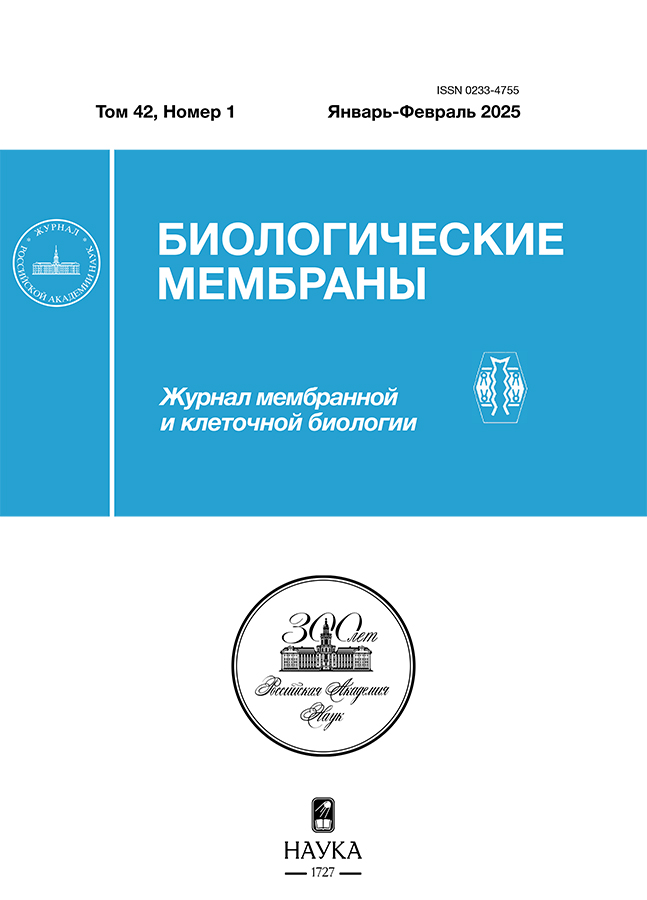Подход для анализа внутриклеточных маркеров в фосфатидилсерин-положительных тромбоцитах
- Авторы: Артеменко Е.О.1,2, Обыденный С.И.1,2, Пантелеев М.А.1,2,3
-
Учреждения:
- Центр теоретических проблем физико-химической фармакологии РАН
- Национальный медицинский исследовательский центр детской онкологии, гематологии и иммунологии им. Дмитрия Рогачева
- Московский государственный университет им. М.В. Ломоносова
- Выпуск: Том 42, № 1 (2025)
- Страницы: 53-60
- Раздел: СТАТЬИ
- URL: https://kazanmedjournal.ru/0233-4755/article/view/681136
- DOI: https://doi.org/10.31857/S0233475525010058
- EDN: https://elibrary.ru/utyoyc
- ID: 681136
Цитировать
Полный текст
Аннотация
Фосфатидилсерин (ФС)-положительные тромбоциты играют важную роль в тромбозе и гемостазе. Они имеют высокую прокоагулянтную активность, способность к везикуляции и могут агрегировать с активированными ФС-отрицательными тромбоцитами. Они обнаруживаются в растущем тромбе in vitro, однако остается ряд загадок, связанных с ними. В частности, внутриклеточная сигнализация и реорганизация цитоскелета в этих тромбоцитах исследованы очень слабо, поскольку они разрушаются при пермеабилизации, необходимой для проникновения антител к внутриклеточным маркерам. В данной работе мы предлагаем подход, который позволяет анализировать внутриклеточные маркеры в индуцированных кальциевым ионофором А23187 ФС-положительных тромбоцитах с помощью проточной цитометрии или конфокальной микроскопии. Мы использовали наиболее мягкую пермеабилизацию фиксированных ФС-положительных тромбоцитов с помощью сапонина и показали, что такая пермеабилизация позволяет в значительной мере сохранить ФС-положительные тромбоциты. Для примера мы проанализировали состояние полимеризованной формы актина в ФС-положительных тромбоцитах и показали, что несмотря на значительную перестройку цитоскелета, происходящую при активации в таких тромбоцитах, актин в них частично представлен в полимеризованной форме.
Ключевые слова
Полный текст
Об авторах
Е. О. Артеменко
Центр теоретических проблем физико-химической фармакологии РАН; Национальный медицинский исследовательский центр детской онкологии, гематологии и иммунологии им. Дмитрия Рогачева
Автор, ответственный за переписку.
Email: lartemenko@yandex.ru
Россия, Москва, 109029; Москва, 117997
С. И. Обыденный
Центр теоретических проблем физико-химической фармакологии РАН; Национальный медицинский исследовательский центр детской онкологии, гематологии и иммунологии им. Дмитрия Рогачева
Email: lartemenko@yandex.ru
Россия, Москва, 109029; Москва, 117997
М. А. Пантелеев
Центр теоретических проблем физико-химической фармакологии РАН; Национальный медицинский исследовательский центр детской онкологии, гематологии и иммунологии им. Дмитрия Рогачева; Московский государственный университет им. М.В. Ломоносова
Email: lartemenko@yandex.ru
Московский государственный университет им. М.В. Ломоносова, физический факультет
Россия, Москва, 109029; Москва, 117997; Москва, 119991Список литературы
- Bevers E.M., Tilly R.H., Senden J.M., Comfurius P., Zwaal R.F. 1989. Exposure of endogenous phosphatidylserine at the outer surface of stimulated platelets is reversed by restoration of aminophospholipid translocase activity. Biochemistry. 28 (6), 2382–2387. doi: 10.1021/bi00432a007
- Kotova Y.N., Ataullakhanov F.I., Panteleev M.A. 2008. Formation of coated platelets is regulated by the dense granule secretion of adenosine 5'diphosphate acting via the P2Y12 receptor. J. Thromb. Haemost. 6 (9), 1603–1605. doi: 10.1111/j.1538-7836.2008.03052.x
- Podoplelova N.A., Nechipurenko D.Y., Ignatova A.A., Sveshnikova A.N., Panteleev M.A. 2021. Procoagulant platelets: Mechanisms of generation and action. Hamostaseologie. 41 (2), 146–153. doi: 10.1055/a-1401-2706
- Dale G.L. 2005. Coated-platelets: An emerging component of the procoagulant response. J. Thromb. Haemost. 3 (10), 2185–2192. doi: 10.1111/j.1538-7836.2005.01274.x
- Sinauridze E.I., Kireev D.A., Popenko N.Y., Pichugin A.V., Panteleev M.A., Krymskaya O.V., Ataullakhanov F.I. 2007. Platelet microparticle membranes have 50- to 100-fold higher specific procoagulant activity than activated platelets. Thromb. Haemost. 97 (3), 425–434.
- Yakimenko A.O., Verholomova F.Y., Kotova Y.N., Ataullakhanov F.I., Panteleev M.A. 2012. Identification of different proaggregatory abilities of activated platelet subpopulations. Biophys. J. 102 (10), 2261–2269. doi: 10.1016/j.bpj.2012.04.004.
- Nechipurenko D.Y., Receveur N., Yakimenko A.O., Shepelyuk T.O., Yakusheva A.A., Kerimov R.R., Obydennyy S.I., Eckly A., Léon C., Gachet C., Grishchuk E.L., Ataullakhanov F.I., Mangin P.H., Panteleev M.A. 2019. Clot contraction drives the translocation of procoagulant platelets to thrombus surface. Arterioscler. Thromb. Vasc. Biol. 39 (1), 37–47. doi: 10.1161/ATVBAHA.118.311390
- Gaffet P., Bettache N., Bienvenüe A. 1995. Phosphatidylserine exposure on the platelet plasma membrane during A23187-induced activation is independent of cytoskeleton reorganization. Eur. J. Cell Biol. 67 (4), 336–345.
- Verhallen P.F., Bevers E.M., Comfurius P., Zwaal R.F. 1987. Correlation between calpain-mediated cytoskeletal degradation and expression of platelet procoagulant activity. A role for the platelet membrane-skeleton in the regulation of membrane lipid asymmetry? Biochim. Biophys. Acta. 903 (1), 206–217. doi: 10.1016/0005-2736(87)90170-2
- Artemenko E.O., Yakimenko A.O., Pichugin A.V., Ataullakhanov F.I., Panteleev M.A. 2016. Calpain-controlled detachment of major glycoproteins from the cytoskeleton regulates adhesive properties of activated phosphatidylserine-positive platelets. Biochem. J. 473 (4), 435–448. doi: 10.1042/BJ20150779
- Dale G.L., Friese P., Batar P., Hamilton S.F., Reed G.L., Jackson K.W., Clemetson K.J., Alberio L. 2002. Stimulated platelets use serotonin to enhance their retention of procoagulant proteins on the cell surface. Nature. 415 (6868), 175–179. doi: 10.1038/415175a.
- Pasquet J.M., Dachary-Prigent J., Nurden A.T. 1998. Microvesicle release is associated with extensive protein tyrosine dephosphorylation in platelets stimulated by A23187 or a mixture of thrombin and collagen. Biochem. J. 333 (Pt 3)(Pt 3), 591–599. doi: 10.1042/bj3330591
- Rochat S., Alberio L. 2015. Formaldehyde-fixation of platelets for flow cytometric measurement of phosphatidylserine exposure is feasible. Cytometry A. 87 (1), 32–36. doi: 10.1002/cyto.a.22567
- Jamur M.C., Oliver C. 2010. Permeabilization of cell membranes. Methods Mol. Biol. 588, 63–66. doi: 10.1007/978-1-59745-324-0_9
Дополнительные файлы













